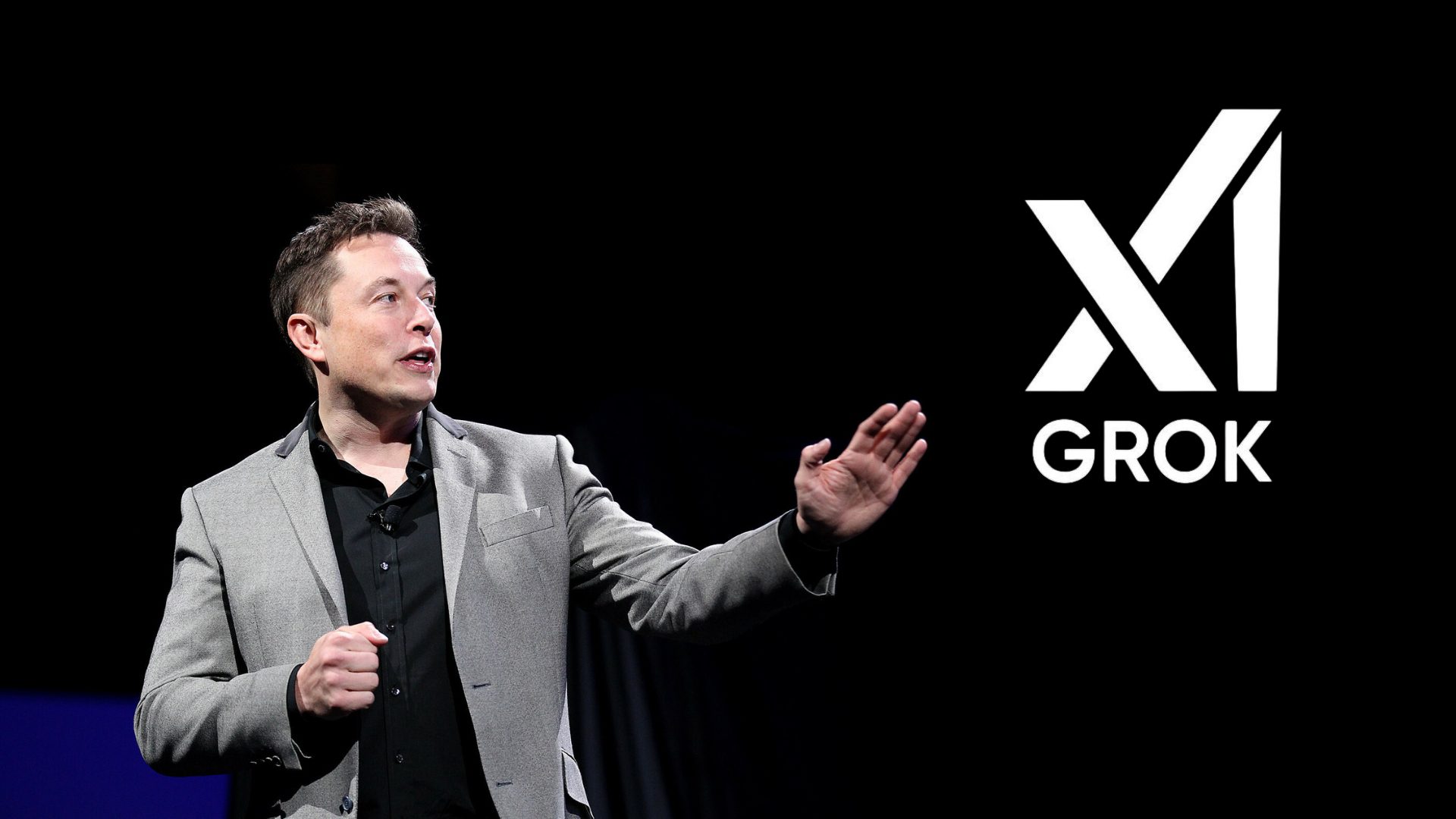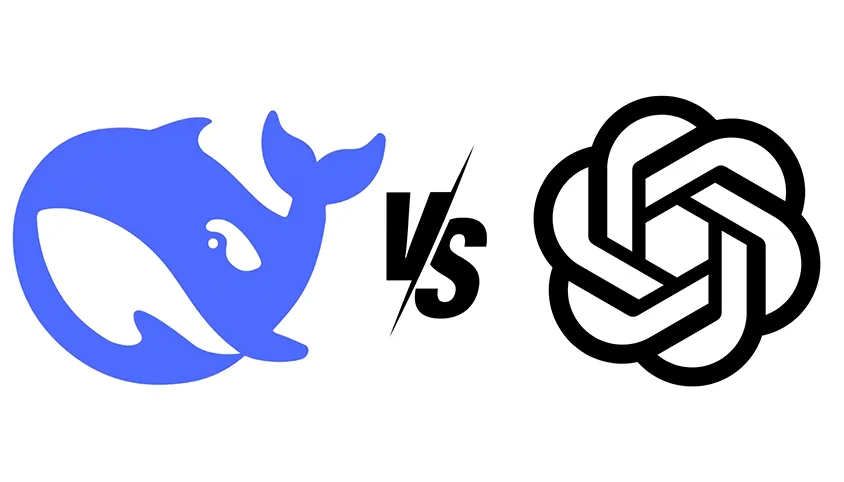-
Find Services
-
Generative AI
-
Blockchain Technology
-
Mobile App Development
-
Software Development
-
Web Development
-
E-Commerce Development
-
App Designing (UI/UX)
-
Web Designing (UI/UX)
-
IoT Development
- Industry
- Manufacturing
- Health Care
- Logistics
- Automotive
- Testing Services
- DevOps
- Game Development
- Robotic Process Automation
- AR & VR Development
- Browse All Services
-
Generative AI
-
Find Agencies
- Submit Reviews
- Research & Surveys

Everyone wants that their website content should rank at the top of SERP which helps in introducing their products and services to their targeted customers. So,enter a world where the digital revolution is reshaping our reality faster than ever before. The optimization of businesses for search engines using AI tools such as ChatGPT has changed the approach to content creation. Implementing ChatGPT into a content marketing strategy improves efficiency and organic search performance. In this guide, we will discuss the process of creating SEO-optimized content using ChatGPT, discuss essential steps to maximize the potential of this tool, and outline the benefits of using ChatGPT for SEO.
Understanding ChatGPT Integration Services
With this AI approach to content writing, keyword research, and audience targeting, including chatGPT integration services, it can help automatically and streamline several processes, from ideation to content writing and competitor analysis, among others. Such an improvement enables content teams to be able to deliver very high-quality content within short turnaround times based on the best practices of any of the major search engines and get your business ahead in results.
Why add ChatGPT to content marketing strategies?
In terms of content marketing, integration with ChatGPT scales productions without losing the quality of production. AI provides tools for identifying trends, keywords, and gaps in production, thereby streamlining workflow and consequently the content produced. This enables marketers to rank higher in search.
Application of ChatGPT in Keyword Research
Keyword research is one of the most effective aspects of SEO since it explains which terms your target audience uses to search for information. ChatGPT makes suggesting relevant keywords much easier by utilizing updated data, so you know what to target with these query types. Here’s a step-by-step guide on how to do keyword research on ChatGPT:.
Step 1: Seed Keywords
Seed keywords are broad terms that define your niche. A list of seed keywords in your industry is the first step to take. For instance, if you work in the digital marketing sector, some seed keywords may include “SEO optimization,” “content marketing,” or “digital advertising.”
Step 2: Expanding Keyword Lists
Then, ask ChatGPT to generate long-tail keywords, which are more specific phrases indicating user intent. For example, by inputting the seed keyword “SEO content creation,” ChatGPT can generate related phrases such as “SEO content creation for e-commerce” or “tips for SEO content creation.”
Step 3: Prioritize Keywords Based on Search Intent
Now you should have a list you are working with, and proceed to use ChatGPT in order to analyze each of the keywords based on what the intent behind such keywords is. You could emphasize high-intent words- “ChatGPT for keyword research” or “ChatGPT integration in content marketing strategy.” That’s it-they mean the ready willingness to go through all that material, which makes them worthy for giving priority in your task.
Step 4. Competition Analysis
Another strong feature of keyword research in ChatGPT is the ability to give insight into competitor keywords. You can ask ChatGPT to analyze competitors’ content and find out what keywords they are ranking for, which will help refine your keyword strategy.
Making SEO-friendly content with ChatGPT
Making SEO-friendly content using ChatGPT is rather simple and efficient. Here is how you can do it:
Step 1: Creating an Outline
Ask ChatGPT to come up with an outline for the content. For example, if you are writing on “Benefits of using ChatGPT for SEO,” request ChatGPT to come up with a structure that includes headers and subheaders for the main points.
Step 2: Drafts and Optimization for SEO
Once you have an outline, ask ChatGPT to expand each section. The natural flow of the text is where you should place the primary and secondary keywords. For instance, you might insert “ChatGPT Integration Services” or “ChatGPT for keyword research” throughout the content. More importantly, you can make use of the tool in creating optimized meta titles, meta descriptions, and alt tags for images.
Step 3: Crafting Captivating Introductions and Conclusions
Engagement is highly important in SEO. The great starting and ending paragraphs can be generated with ChatGPT so that the reader feels engaged from the beginning of the content till the very end. Even a nice CTA can be developed using ChatGPT and will push the user for action after reading the content.
Step 4: Refine for Readability and SEO Best Practices
After preparing your draft, request ChatGPT to check readability and keyword density besides complying with SEO best practices. Have ChatGPT align keyword placement so that it occurs naturally without comprising keyword optimization.
Use ChatGPT for optimizing the content of analysis
The analysis of content would stand as the prime advantage from the employment of ChatGPT for the purpose of doing SEO. This enables the functionality of a tool, evaluating the readability of the contents, keyword usage, or if the entire content holds up, thus proving its worth in performance aspects at search engine rankings.
Optimization by ChatGPT in real time
It can provide tips for real-time optimization with its ability to scan any content and provide recommendations on keyword placements, content word count, and tone for all contents to be in line with search engine algorithms.
Benefits of Using ChatGPT for SEO
ChatGPT brings forward a number of advantages while considering SEO. Here are the primary benefits:
1. Efficiency
ChatGPT allows for quick content production, and SEO teams can then create high-quality, optimized content in a fraction of the time. This efficiency, besides saving resources, further enables scaling content production.
2. Keyword Targeting Improved
The use of ChatGPT for keyword research will enable businesses to focus on very specific, relevant search queries with an audience. The long-tail keywords and the related terms produced through this tool align with intent and increase the probability of ranking for those terms.
3. Cost-Effective Content Generation
Content generation by traditional methods can be cost-intensive. Through the utilization of ChatGPT, businesses eliminate some of the costs in terms of hiring, training, and content production, which makes it a cost-effective SEO solution.
4. Consistent Content
This helps ensure consistency in the content on all platforms, which is a great way to boost brand reputation. This can range from the tone to the style and even the quality of information.
5. Detailed Competitor Analysis
The ChatGPT also allows for competitor analysis in doing keyword research, through which businesses can determine competitors’ strategies and take advantage of them. This competitive insight is priceless in terms of positioning the content correctly in search results.
6. Data-Driven Optimization
ChatGPT relies on such a humongous amount of data to give one informed recommendations on SEO practices in order to give one information that helps refine content and, therefore, is extremely important for getting better rank on search.
Implementing ChatGPT as a Long-Term SEO Strategy
Inclucing ChatGPT into your long-term SEO strategy can be very important to staying competitive as a business. ChatGPT learns fast with the changes in the algorithms and gives recommendations of content that is trendy enough to stay relevant in search queries.
Best Practices for Using ChatGPT in SEO Content Creation
Here are some tips and tricks for using ChatGPT in SEO content creation.
This should be very specific for targeted responses from ChatGPT. Clearer prompts bring better content ideas and keyword suggestions.
Periodic Updates: The SEO is dynamic, hence you would have to periodically update your integration of ChatGPT to stay in line with the latest algorithms and the latest trends of the industry.
Human Insight Aligned with AI: As good as it sounds that the tool, ChatGPT, is powerful, it is only the human mind that will help keep the content in alignment with the brand voice and industry standards.
Use ChatGPT to create topic clusters: Creating topic clusters around your major keywords helps you build content authority and improves internal linking to make your content SEO-ready.
Measuring Impact on Your SEO
Conclusively measure the output of ChatGPT in your SEO by determining how much organic traffic increases, keyword rankings are enhanced, or even improves user engagement. You need to apply analytics tools to figure out what your desired SEO outcome could be for this generated content and subsequently make the adjustment.
Conclusion:
Using ChatGPT for SEO opens up the world of possibilities for marketers to make content creation efficient, scalable, and cost-effective for optimized content. Integrating ChatGPT into a content marketing strategy, keyword research, and leveraging its insights for real-time content optimization will increase the online presence of businesses and enhance search engine rankings. In an environment where staying competitive depends on both speed and quality, ChatGPT is one powerful tool for creating SEO-focused content.
Latest Posts
Categories
Tags
Submit Your Inquiry
Related Posts

Google’s Core Update 2025: What SEOs Need to Do to Stay on Top
Introduction The Google SEO Update for 2025 is expected to continue the pattern of Google's algorithm changes, which have continuously changed the game for PPC Companies. Every time Google releases a fundamental change, website administrators, content producers, and SEOs scramble to understand the ramifications and modify their tactics. This next update is expected to include significant changes that might impact user involvement, website ranks, and overall search exposure. To be competitive in the ever-changing field of search engine optimization, one must understand the subtleties of the Google SEO services. This blog will describe the update's specifics, highlight its main modifications, and offer doable tactics that SEOs may use to maintain or improve their ranks. Understanding Google’s Core Update 2025: What Is It? A significant change in Google's search algorithms and ranking systems is called a "core update." Core upgrades impact many ranking variables and often lead to significant changes in search engine results pages (SERPs), unlike more minor updates that focus on particular features like spam detection or page experience. Google's Official Communications Google often shares recommendations or suggestions about significant changes, although it doesn't always provide detailed information about fundamental improvements. The 2025 core upgrade aims to enhance content quality, detect AI-generated material, guarantee link relevancy, and boost user experience. Significant Modifications to the 2025 Update from Google 1. Improvements to Content Quality and Relevance Google is improving its capacity to recognize and prioritize user-focused, high-quality content above generic or low-quality information. Websites that offer original, in-depth, and thoroughly researched information will probably gain from this. Content produced by AI that lacks human review and creativity can be devalued. 2. Identifying AI-Generated Content Google's ability to identify AI-generated material is improving. While spammy, low-effort AI material may be penalised, high-quality AI-assisted content that genuinely offers value will remain viable. 3. Updates on Backlink Evaluation Backlinks are more important than ever in terms of quality rather than quantity. Backlinks that are spammy or irrelevant may cause a reduction in ranking. Instead of purchasing links, websites should concentrate on obtaining organic, reliable links. 4. Core Web Vitals and User Experience (UX) Rankings will be more heavily influenced by page speed, mobile friendliness, and engagement. Websites with invasive pop-ups, poor design, or sluggish load times may be penalised by Google. Improving UX with user-friendly navigation, quick-loading pages, and captivating design is crucial. 5. Adjustments for E-E-A-T (Experience, Expertise, Authoritativeness, and Trustworthiness) Websites with genuine credibility and experience will rank higher. Google's emphasis on author qualifications, openness, and reliability keeps increasing. How SEOs Can Adapt to the Changes? 1. Strategies for Content Optimization Put People First: Google favours material that is educational, thoroughly researched, and beneficial to users. Avoid Over-Optimized AI information: Make sure human editors examine and improve information produced by AI. Boost Topical Authority: Provide thorough coverage of topics while reinforcing content clusters with links to related sites. 2. Best Practices for Technical SEO Using a content delivery network (CDN), optimising images, and turning on caching can boost site speed and performance. Make Sure It's Mobile-Friendly: Because Google favours mobile-first indexing, responsive design is necessary. Use Structured Data: To improve search engine comprehension of your material, use schema markup. 3. Establishing Authority and Link Building Obtain High-Quality Backlinks: Consider partnerships, guest posting, and reliable sources. Steer clear of link schemes: Purchasing or trading links in large quantities is a dangerous tactic. Internal Linking Strategy: Make effective connections between pertinent pages to strengthen the site's architecture. 4. Optimization of User Experience and Engagement Improve Readability & Navigation: Use brief paragraphs, bullet points, and distinct headings. Lower Bounce Rates: Ensure the material is interesting and responds appropriately to user questions. Enhance measures such as Cumulative Layout Shift (CLS) and Largest Contentful Paint (LCP) to optimise core web vitals. Basic SEO Mistakes to Avoid Post-Update Keyword stuffing: Using too many keywords in one piece of text will result in penalties. Over-Reliance on AI-Generated Content: AI should complement human contribution, not take its place. Ignoring Page Experience and UX: Slow load times and poor navigation might lower ranks. Spammy Backlinks: The authority of your website may be adversely affected by backlinks that are of poor quality or irrelevant. Tools & Resources to Stay Updated Google Search Console: Track the indexation and performance of your website. Track backlinks, site audits, and keyword rankings using SEMrush and Ahrefs. Enhance Core Web Essentials for a Better User Experience with Google PageSpeed Insights. Follow the SEO Pros – Keep yourself updated by following prominent figures in the field, such as John Mueller of Google, Moz, and Neil Patel. SEO Communities: Participate in discussion boards such as Google Search Central Blog and Reddit's r/SEO. To Sum It Up Google's Core Update 2025 will fundamentally alter how websites appear in search results, emphasising the importance of user experience, content quality, and authoritative backlinks. The best chance of preserving or raising their ranks will go to SEOs who adjust by emphasising high-quality, user-focused content, robust technical SEO, and moral link-building techniques. You can make sure that your website stays competitive in the constantly shifting search market by being aware of the Google SEO Update and taking proactive measures to modify it. For long-term SEO success, stay current, adhere to best practices, and put user value first at all times.

5 Essential Features Every eCommerce Site Needs
Building an eCommerce website is like setting up a physical store in a digital world. The difference? Your "storefront" must attract and engage visitors 24/7. To succeed, your site must have features that create an excellent customer experience, build trust, and make shopping seamless. In this blog, we’ll walk through five eCommerce features that every online store needs to thrive. Whether you're starting from scratch or looking to improve your website, these essentials will be your map towards success. 1. Mobile-Friendly Design: The Non-Negotiable In 2025, more than half of all eCommerce sales are made on mobile. A mobile-friendly design isn't nice to have, it's necessary. Your website needs to scale with screens of all shapes and sizes so that the visitor can browse, add products to their cart, and check out easily on his phone. Here's why: A better user experience: Buyers stay longer and navigate deeper. SEO benefit: Search engines reward mobile-friendly sites. More conversions: Seamless mobile experience translates directly into more sales. Use responsive design methodologies, and test your website on different devices. This means you won't miss out on sales because of a site that lacks great mobile functionality. 2. Intuitive Navigation: Guiding Customers Seamlessly Walk into a store without signs or directions. Frustrating, right? Your online store is not any different. Intuitive navigation ensures shoppers find what they're looking for without confusion. Online store essentials for reaching the correct landing page include: A clear menu with well-defined categories. A powerful search bar for quick product discovery. Breadcrumb trails so users can retrace their steps easily. Pro tip: Categorize your products to make sense logically. For instance, if you are selling shoes, you categorize them into men's, women's, and kids'. Intuitive navigation improves customer experience and keeps users from leaving in frustration. 3. Secure Payment Options: Building Trust Safety will always be a top concern of e-commerce buyers. Online consumers require feeling secure over the sensitivity of their information. This confidence through safe payment solutions develops trust and boosts conversion rates. So, what's most important: Apply SSL certificates to your users' data. Have easy-to-spot payment brands including Visa, PayPal, Stripe Variety in payments, that would involve credit cards, e-wallets, Buy Now Pay Later. You should also display trust badges on your checkout page. These visual indicators help reassure the customer that their transactions are safe and reduce the rates of cart abandonment. 4. A User-Friendly Shopping Cart and Checkout Process This is where visitors become buyers. All your hard work can be undone if your shopping cart and checkout process are clunky or confusing. Optimize this step with these eCommerce features: A persistent cart that saves items for later. Clear pricing with no hidden fees. Guest checkout options for faster purchases. Make sure there is an ease in editing the cart, applying discounts, and shipping options. The simpler it is, the less likely the user will drop the cart. 5. Search Engine Optimization (SEO): Getting Found Online Even the best-designed site is worthless if nobody finds it. SEO helps you get more visitors by ranking higher in search engine results. It's a game-changer for eCommerce. Focus on these areas: Keyword optimization: Use terms like "affordable sneakers" or "eco-friendly bags" in your product descriptions. High-quality product pages: Write detailed descriptions, use clear images, and include customer reviews. Voice search readiness: Adapt to how people speak when searching, such as "best running shoes under $50." Stay updated on trends like AI-powered search and Core Web Vitals, as they directly impact your visibility. A well-optimized site ensures consistent organic traffic, reducing your dependency on paid ads. Wrapping Up These are the five eCommerce features of an excellent online store: Mobile-friendly design. User-friendly navigation. Secure payment options. Convenient shopping cart and checkout. Strong SEO practices. Each plays a part in adding more ease to the experience of your customer and selling them. Creating the perfect online store is a process by focusing on online store essentials rather than just building a website. For more information about optimizing an eCommerce website, go to Right Firms for the best developers and digital gurus on the net.

How Generative AI is Redefining Content Creation in 2025?
The content creation industry has constantly evolved with technology, but 2025 is proving to be a landmark year, thanks to Generative AI. A technology that has moved beyond merely simple automation to a creative powerhouse has turned the tables on how storytelling, marketing, and audience engagement are approached. For any writer, marketer, or business owner, Generative AI is the way to stay in the game. Let's understand and move into how Generative AI, AI in content, and creative AI are changing content creation and marketing forever. What is generative AI? Generative AI refers to any artificial intelligence model that allows the generation of new content. Unlike the old kind of AI, which simply predicts or classifies based on learnt data, generative AI produces something completely new, such as articles, videos, images, or even music. ChatGPT, DALL·E, and Jasper AI are just some examples of how Generative AI is enabling a myriad of new applications in innovative content creation. The increase in generative AI in 2025 is because it "thinks" "creatively." These machines learn styles, patterns, and contexts to generate outputs that are often indistinguishable from the creativity of humans. Why Generative AI Matters in Content Creation? Speed Meets Quality Creating engaging, high-quality content has always been time-consuming. Whether blogging, crafting social media posts, or designing ads, the manual effort adds up. With AI in content, this kind of task that once would have taken hours or days can now be completed in a few minutes. For example: With Jasper AI, a content marketer can produce an SEO-friendly draft for a blog within an hour. Designers can make ad banners or logos using creative AI-powered platforms, such as Canva or Adobe Firefly. Result? Content creation at warp speed without losing quality. Tailor-made Content for Every Audience Audiences expect personalization by 2025. All that general content is out of use. That's where the magic of marketing automation with generative AI happens. Brands using AI can do the following: Craft hypertargeted emails. Personalized website landing pages to people from different demographics. Product recommendation for individual users. This level of personalization ensures higher engagement and conversions, making AI in content an essential tool for businesses. Empowering Creative Teams Contrary to fears that AI might replace humans, generative AI enhances creativity. It takes care of repetitive tasks, freeing up creative teams to focus on strategy and storytelling. For example: Writers can use AI-generated drafts as a foundation, adding a human touch to refine the message. Designers can use AI for developing templates or even mood boards for campaigns. Human creativity mixed with creative AI offers limitless possibilities. Real-World Applications of Generative AI in 2025 Blog Writing and Content Marketing Tools like ChatGPT are transforming the way blogs are written. A marketer can generate ideas, outlines, or even complete drafts using AI in content. These tools understand SEO trends, ensuring that the content ranks high on search engines. Social Media Content Social media thrives on fresh, engaging content. Generative AI creates captions, hashtags, and even viral video ideas created for specific platforms like Instagram, TikTok, and LinkedIn. Video and Image Designing New platforms like DALL·E and Runway ML are changing the face of visual storytelling. Businesses can design customized graphics, mock a product, or even create an entire video ad in hours rather than in weeks. Email Marketing Generative AI writes personalized email subject lines, body text, and CTAs through marketing automation. This helps increase open rates and engagement, effectively connecting brands to audiences. The Role of Generative AI in Marketing Automation Marketing automation is by no means new; however, in 2025, Generative AI is taking it to the next level. Here's how: Content Generation: AI writes blog posts, ad copies, and landing page content. Data Insights: Generative AI analyzes user behavior to predict trends and recommend strategies. Campaign Optimization: AI tools test various ad or email variations so that the most efficient ones are used. By integrating Generative AI into marketing automation, brands can deliver campaigns that resonate with their audience while saving time and resources. Challenges in Adopting Generative AI The advantages are enormous, but the adoption of generative AI is not problem-free. Quality Control: The content done through AI isn't always perfect. It requires human oversight to ensure it aligns with brand values. Ethical Concerns: With plagiarism and misinformation, ethics surrounding AI and content creation have been a hot topic. Learning Curve: Businesses need to invest time in understanding and implementing AI tools effectively. Despite these obstacles, the capabilities of creative AI far outweigh the hindrances. The Future of Generative AI in Content Creation This is just the start of the journey of Generative AI. Its impact on industries such as marketing, entertainment, and education has already become transformative by 2025. The future projections include: More Human-Like AI: AI models will only continue to improve, creating content indistinguishable from what humans produce. Seamless Integration: The tools will integrate deeper into the workflows so that teams can use them even better. New Opportunities: Generative AI will allow new forms of content-a mix of other things-like interactive stories and virtual experiences. How Businesses Can Embrace Generative AI? For businesses looking to stay ahead, here are actionable steps: Invest in the Right Tools: Good starting points begin with platforms like Jasper AI, DALL·E, and Writesonic. Train Your Teams: Equip your teams with the skills to use generative AI effectively. Experiment and Iterate: Test AI-generated content, get their feedback, and refine your approach. The trick here is to treat AI as a partner, not a replacement, when working on content. Conclusion The age of Generative AI is here and with it changing the way we think about content-from writing to design, from marketing to storytelling. AI enables content creation that is faster, smarter, and more personalized. With the help of AI-driven tools in content, business can exploit new levels of efficiency and creativity. Though challenges abound, opportunities outweigh them. In 2025, working with Generative AI is not a choice; it's a necessity to take anything seriously in terms of content creation and marketing. So, are you ready to explore the power of creative AI? Let's dive in and find a world where innovation meets imagination. This blog is designed to inspire and inform marketers, businesses, and creators about the future of content creation. Visit Right Firms to explore top Generative AI tools and services for elevating your content strategy.







